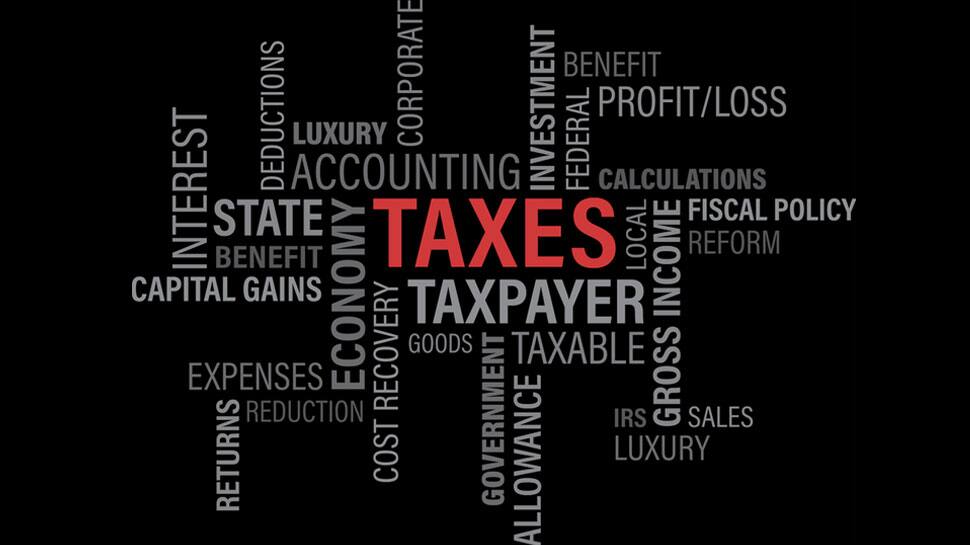Finance Minister Arun Jaitley is all set to announce the Union Budget for 2018-19. The Union Budget is the most comprehensive report of the Government's finances in which revenues from all sources and outlays for all activities are consolidated. It is also a summary of estimates of the government's accounts for the next fiscal year called Budgeted Estimates.
Here are 25 words you must know about before Arun Jaitley reads out his Budget speech
1. Direct and Indirect Taxes: Direct taxes are the one that fall directly on individuals and corporations while Indirect taxes are imposed on goods and services. They are paid by consumers when they buy goods and services. (Here is how you can calculate your Income Tax)
2. Goods and Services Tax or GST: The tax on supply of goods, or services or both. "Goods" include every kind of movable property while "services" include activities relating to the use of money or its conversion by cash or by any other mode.
3. Customs Duty: These are levies charged when goods are imported into, or exported from, the country, and they are paid by the importer or exporter.
4. Fiscal Deficit: When the government's non-borrowed receipts fall short of its entire expenditure, it has to borrow money from the public to meet the shortfall. The excess of total expenditure over total non-borrowed receipts is called the fiscal deficit.
5. Revenue Deficit: The difference between revenue expenditure and revenue receipt is known as revenue deficit. It shows the shortfall of government's current receipts over current expenditure.
6. Primary Deficit: The primary deficit is the fiscal deficit minus interest payments which gives details of how much of the Government's borrowings are going towards meeting expenses other than interest payments.
7. Monetary Policy: It includes actions taken by the RBI to regulate the level of money or liquidity in the economy, or change the interest rates.
8. Fiscal policy: These are the government actions with respect to aggregate levels of revenue and spending. Fiscal policy is implemented through the budget and is the primary means by which the government can influence the economy.
9. Inflation: It is the sustained increase in the general price level.
10. Capital Budget: It consists of capital receipts and payments and includes investments in shares, loans and advances granted by the central Government to State Governments, Government companies, corporations and other parties.
11. Revenue Budget: It consists of revenue receipts of the Government and it expenditure. Revenue receipts are divided into tax and non-tax revenue. Tax revenues constitute taxes like income tax, corporate tax, excise, customs, service and other duties that the Government levies. The non-tax revenue sources include interest on loans, dividend on investments.
12. Finance Bill: The Bill produced immediately after the presentation of the Union Budget detailing the Imposition, abolition, alteration or regulation of taxes proposed in the Budget.
13. Vote on Account: The Vote on Account is a grant made in advance by Parliament, in respect of the estimated expenditure for a part of new financial year, pending the completion of procedure relating to the voting on the Demand for Grants and the passing of the Appropriation Act.
14. Excess Grants: If the total expenditure under a Grant exceeds the provision allowed through its original Grant and Supplementary Grant, then, the excess requires regularization by obtaining the Excess Grant from Parliament under Article 115 of the Constitution of India.
15. Budget Estimates: Amount of money allocated in the Budget to any ministry or scheme for the financial year.
16. Revised Estimates: Revised Estimates are mid-year review of possible expenditure, taking into account the rest of expenditure, New Services and New instrument of Services etc.
17. Re-appropriations: They allow Government to re-appropriate provisions from one sub-head to another within the same Grant.
18. Outcome Budget: It is a progress card on what various Ministries and Departments have done with the outlays in the previous annual budget. It measures the development outcomes of all Government programs and whether the money has been spent for the purpose it was sanctioned including the outcome of the fund usage.
19. Guillotine: Once the prescribed period for the discussion on Demands for Grants is over, the Speaker of Lok Sabha puts all the outstanding Demands for Grants, Whether discussed or not, to the vote of the House. This process is popularly known as 'Guillotine'.
20. Cut Motions: Motions for reduction to various Demands for Grants are made in the Form of Cut Motions seeking to reduce the sums sought by Government on grounds of economy or difference of opinion on matters of policy or just in order to voice a grievance.
21. Consolidated Fund of India: All revenues raised by the Government, money borrowed and receipts from loans given by the Government flow into it. All Government expenditure other than certain exceptional items met from Contingency Fund and Public Account are made from this account.
22. Contingency Fund of India: A fund placed at the disposal of the President to enable him/her to make advances to the executive/Government to meet urgent unforeseen expenditure.
23. Public Account: It is used in relation to all the fund flows where Government is acting as a banker like Provident Funds and Small Savings.
24. Corporate Tax: It is paid by corporations or firms on the incomes they earn.
25. Disinvestment: It is the sale of shares of public sector undertakings by the Government. The shares of government companies held by the Government are earning assets at the disposal of the Government. If these shares are sold to get cash, then earning assets are converted into cash, So it is referred to as disinvestment.
















